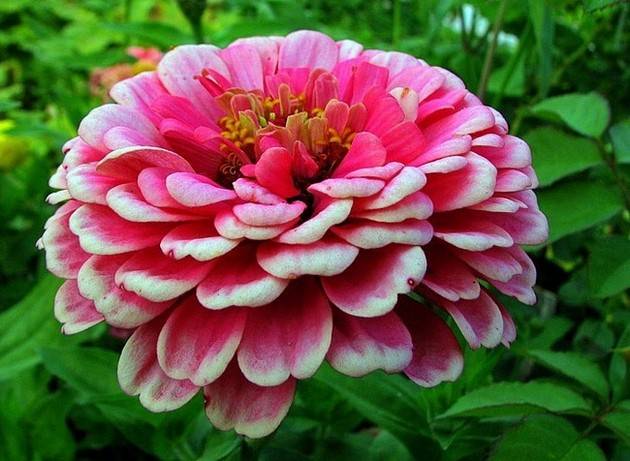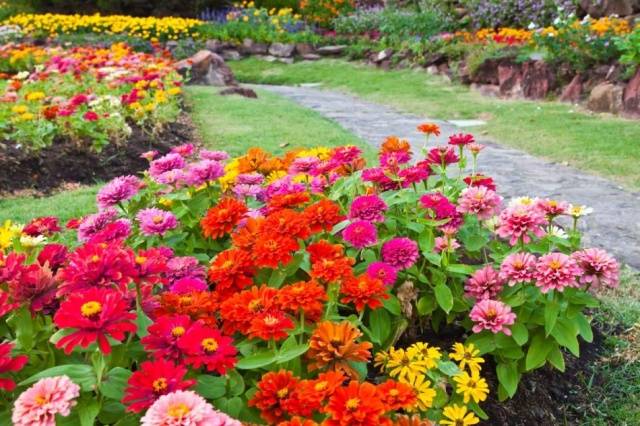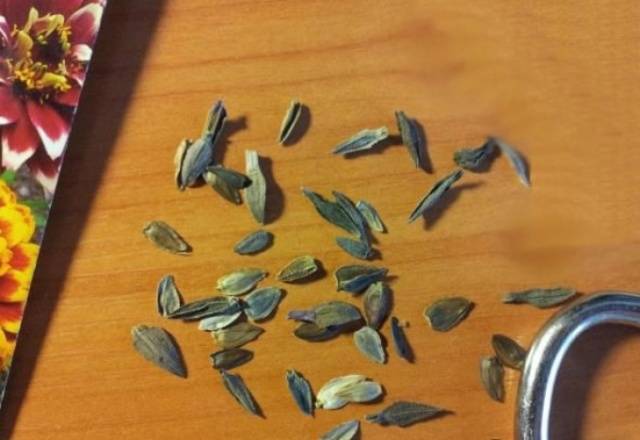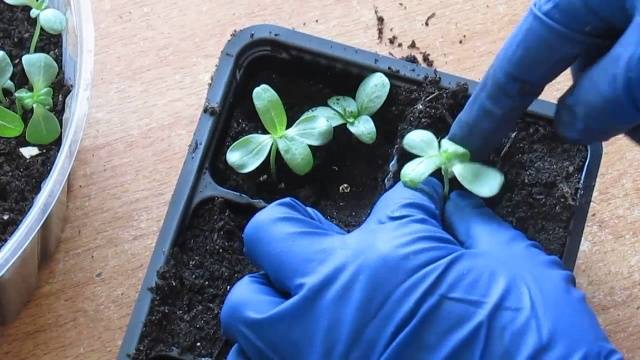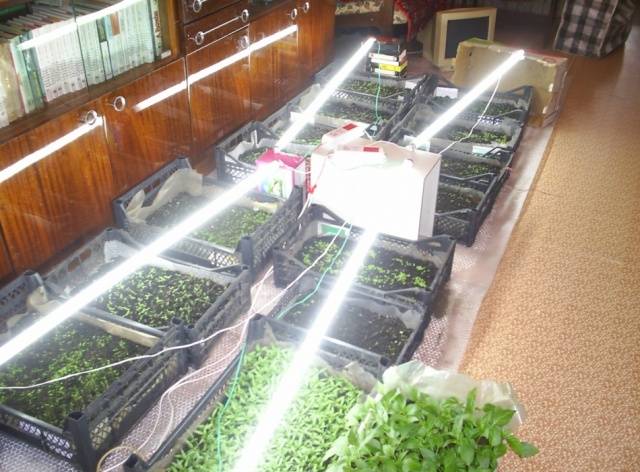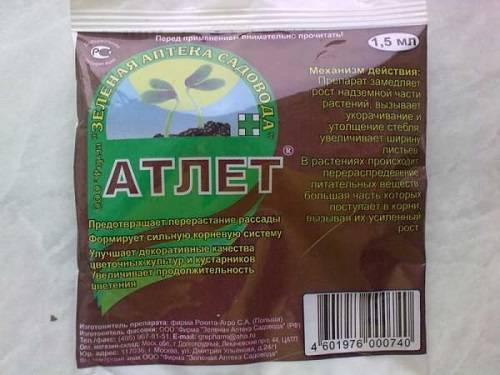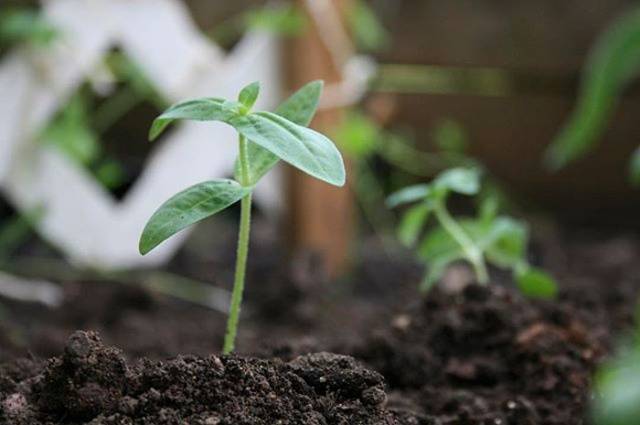Content
Man does not live by bread alone. The overwhelming majority of land owners want their garden to be well-groomed and the flower garden in order. And in this case, you can not do without summer workers. They bloom almost all season and do not require special care. Some of them can be sown in the ground immediately to a permanent place, but most annual flowers in this case will bloom too late. Therefore, they are grown as seedlings. This is how zinnia is grown.
This flower can be used to decorate any flower bed. A huge number of plant varieties of different heights and with different types of inflorescences allow it to be widely used in landscape design. And the color palette - almost all colors and shades, additionally contributes to this.
Zinnia comes from Central America, there is no frost there. The plant does not tolerate them in our climate either. Even a drop in temperature by only 1 degree below 0 is destructive for her. Therefore, it is possible to sow zinnia in open ground only after the end of returnable spring frosts.
Why seedlings
In most varieties, the period from germination to first flowering lasts almost 70 days. If you add more time from sowing to sprouting, it turns out that blooming zinnia can be seen in almost 3 months. Our summer is short, and when sown in open ground, the flower simply does not have time to show everything that it is capable of. Therefore, the only way to get early flowering is to grow seedlings.
How to sow zinnia so it doesn't stretch
The seeds of this flower have good germination and break out of the ground quickly - sometimes even in 6 days. To hasten the seedlings and make sure the quality of the seeds, they must first be soaked. Any growth stimulant will be a good helper; it must be used according to the instructions. Plants grown from seeds treated in this way will show better health and lush flowering.
Seeds are laid out in grooves to a depth of 0.5 cm. The soil should be slightly moist, but not waterlogged. It is very important to choose the right containers for growing zinnia seedlings. A well-developed root system requires room for growth, so the height of the container for growing seedlings should not be less than 10 cm. When picking, which is carried out about 3 weeks after germination, you need to take care of tall cups of sufficient volume. Pinching the root when picking will make the roots fibrous, they have the greatest absorption capacity, and will perfectly feed the plants.
So that the seedlings appear faster, put a plastic bag on the container with the crops and put it in a warm place. After emergence, the most important thing for them is a sufficient amount of light. Therefore, their place is on the lightest windowsill.
Seedling comfort
Like any plant, zinnia has its own growing preferences. This also applies to seedlings. In what conditions will she be comfortable:
- Where the seedlings are grown, the air temperature should be about 20 degrees.
- This light-loving plant requires good illumination, and daylight hours should last at least 12 hours.
- Watering zinnia seedlings should be moderate.In this case, it is better to underfill slightly than to overfill. Do not forget that the water must be at room temperature and well settled.
- The soil for growing zinnium seedlings is selected with a neutral reaction, which allows air and excess moisture to pass through well. It should not be too dense - roots develop poorly in such soil. The content of organic nutrients in the soil should be moderate, it is better to feed zinnia with organic matter after planting in the ground.
- An important point is fertilization. Zinnia seedlings are fed only with mineral fertilizers, at this stage they do not need organic matter. It is best to use a complex fertilizer with trace elements, which is highly soluble in water. The dosage for seedlings is halved.
If these conditions are not met, problems will appear:
- seedlings will stretch out, especially often in the phase of cotyledonous leaves;
- thin stems are not able to withstand their own weight and lie on the ground;
- weakened plants lie in wait for fungal diseases, the stems can be affected by the black leg and rot;
- the growth and development of plants will slow down.
Why seedlings are pulled
The main reason is non-compliance with growing conditions. How is this expressed?
- The seeds were sown too early. This plant is fast growing. In the middle lane, earlier than in the middle or end of April, it is not worth sowing zinnia on seedlings. In warmer regions, you can do this 2-3 weeks earlier. It is preferable to get a seedling with fewer leaves, but strong and stocky. It will take root better and start growing faster after transplantation.
- The temperature on the windowsill is too high. Under these conditions, the seedlings will certainly stretch out, as their growth will accelerate.
- Poor lighting. This circumstance makes the stems stretch out in search of light; without it, plants simply cannot exist.
- Sowing too dense. If it is not possible to plant the plants in separate containers, you cannot sow them too thickly. Competition for light and nutrition will inevitably force the seedlings to stretch out.
How to help elongated plants
If, despite all efforts, the seedlings are still pulled out, what measures should be taken:
First of all, adjust the measures for the care of seedlings:
- if there is a lack of light, organize additional lighting with special phytolamps, if they are not there, ordinary fluorescent lamps will do. When using ordinary incandescent lamps for supplementary lighting, they should not be placed close to the seedlings - they may overheat and even burn.
- Dry containers with plants and water them less abundantly in the future, make sure that the water is not cold;
- if the temperature in the seedling growing zone is too high, arrange for frequent ventilation; if it is too low, arrange heating to increase it;
- sometimes the air temperature is quite high, but the ground is cold, it blows from the cracks in the window. In this case, the seedlings will not grow and develop normally, you need to insulate the windowsill.
Plants will have enough nutrition that is in the soil.
What else can you do to help plants? The best thing to do is to plant their flower garden. Unfortunately, much here depends on the weather conditions; it is not always possible to make a transfer Measures that can be taken in a room environment:
- add soil to the seedling container. This will not only help the plants, but also make them stronger, additional roots will form on the stems.
- dig a groove next to each seedling, in which to put the stalk and cover it with earth, the leaves should be outside;
- slow down growth by correcting the temperature regime - keep it cool at night, and in the sun during the day;
- spray seedlings with drugs that inhibit the growth of seedlings, for example, Athlete - it is also suitable for zinnia.
Dilute the drug following the instructions.Spraying should be twice at weekly intervals. - If the plants are too crowded, you can plant them in separate cups, deepening the stems to the cotyledonous leaves;
- a good way is to simply pinch each sprout, this technique will make the plant bush, side shoots will grow, not the central stem.
Such plants, after planting in the ground, will give a more lush flowering. - If the seedlings are large enough, each can be tied to a support of bamboo skewers. This must be done carefully, trying not to damage the stem; you cannot press it against the support.
You can watch the video about how you can help the elongated zinnia seedlings:
Zinnia is one of the ten most attractive and common annuals. Sow it on seedlings, help it if it stretches out, and the plant will thank you with lush and long flowering.
